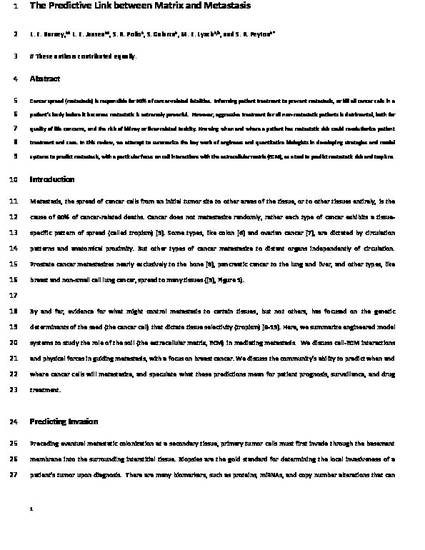
Cancer spread (metastasis) is responsible for 90% of cancer-related fatalities. Informing patient treatment to prevent metastasis, or kill all cancer cells in a patient's body before it becomes metastatic is extremely powerful. However, aggressive treatment for all non-metastatic patients is detrimental, both for quality of life concerns, and the risk of kidney or liver-related toxicity. Knowing when and where a patient has metastatic risk could revolutionize patient treatment and care. In this review, we attempt to summarize the key work of engineers and quantitative biologists in developing strategies and model systems to predict metastasis, with a particular focus on cell interactions with the extracellular matrix (ECM), as a tool to predict metastatic risk and tropism.
Available at: http://works.bepress.com/shelly_peyton/4/
